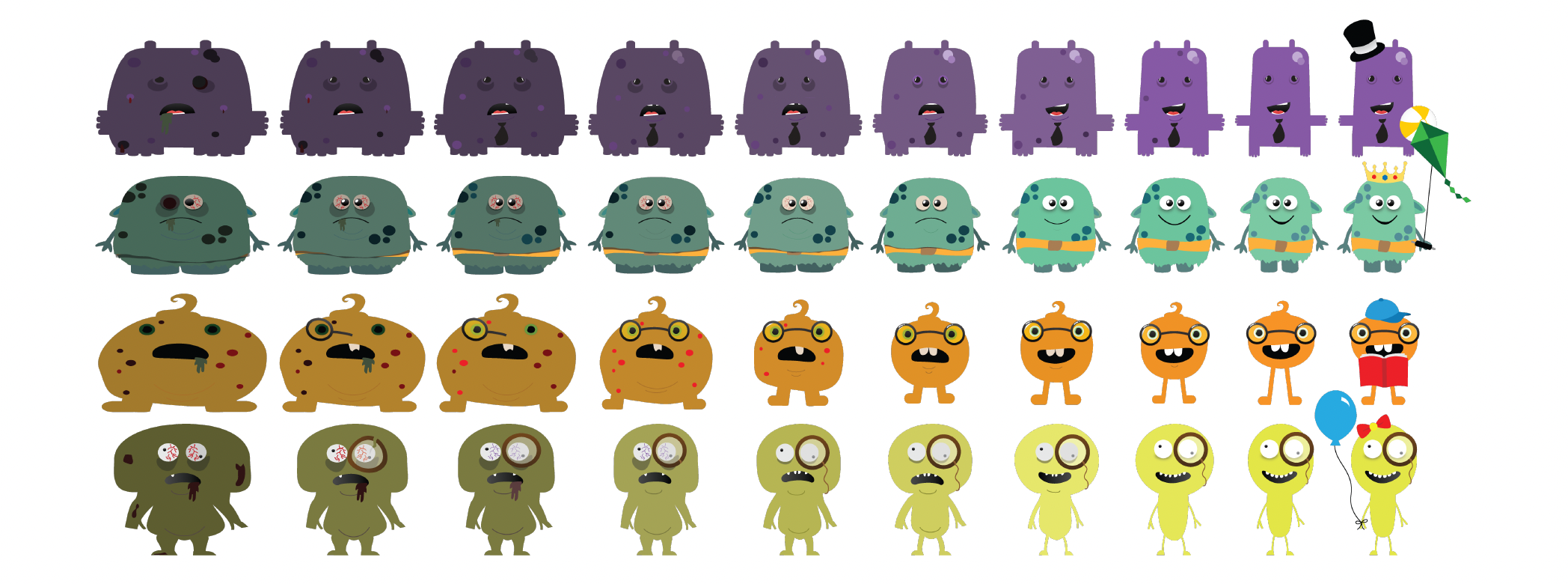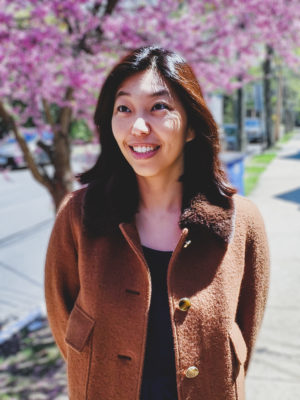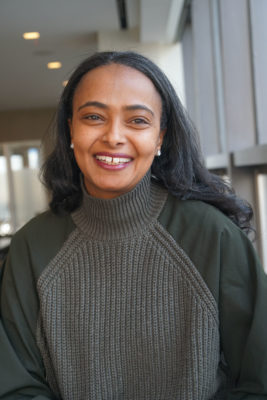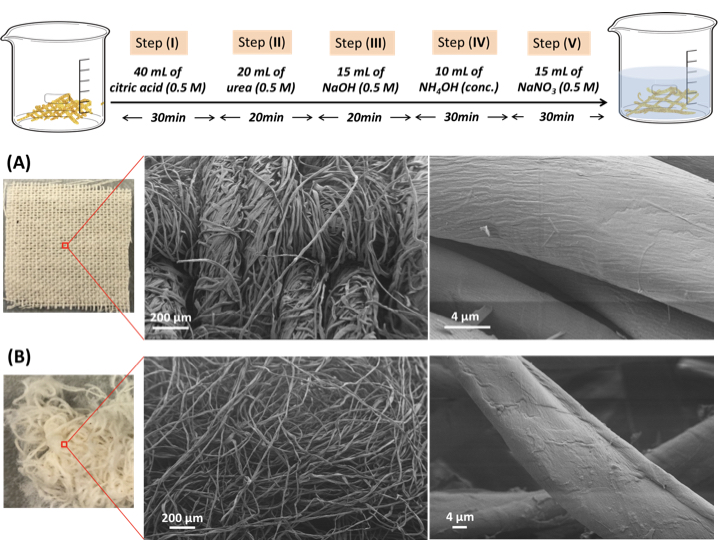
FIT faculty and student research activity has never been more robust. Case in point: The National Science Foundation (NSF) has approved four active grants for FIT faculty, the most in the college’s history. These projects range from programming a nutrition app to developing a closed-loop process for recycling muslin.
For some of the projects, FIT is partnering with prestigious research universities such as Carnegie Mellon, Stony Brook University, and Drexel University—demonstrating the utility of FIT’s core competencies in innovation across industries. Northeastern University and Carnegie Mellon are collaborators on grant proposals currently under review.
“Scientists and engineers at these R1 universities appreciate what it means to have good design,” says Lucia DeRespinis, executive director of the Office of Grants and Sponsored Programs, “which FIT is extremely strong on.”
These National Science Foundation grants are representative of FIT’s broader success with prestigious national grant-making organizations. The National Park Service, the National Endowment for the Humanities, the National Endowment for the Arts, and the Hearst Foundations have all funded the college’s research and programming. “We’re getting headway into areas we never would have expected even a few years ago,” DeRespinis says.
Here are details on all four projects.

Studying nutrition through gaming. When Maria Hwang, assistant professor of Computer Science, was working toward her EdD at Columbia University, she taught math in a public high school. Seeing how much the students played games on their phones, she was eager to find a way to harness mobile games to educational ends.
Her dissertation involved a digital game that would teach people how to manage their diet. Players could feed a monster avatar many different kinds of foods to see how the food affected its health, thereby learning nutritional principles for themselves.
At FIT, Hwang is working with students to program a more evolved version of the game, Meals for Monsters, with more features and a wider range of goals, for example, losing weight, training to be a runner, or managing a chronic disease. When players win rounds, they are rewarded with accessories and “health points” for their monster avatar.
The game also allows users to crowdsource answers to their nutrition questions. If a player doesn’t know how many carbs are in a certain meal, they can ask others to estimate; generally, a consensus of answers will be closer to correct than one person’s guess.
Hwang worked with 10 undergraduates in her research cohort, led by Samantha Olinsky, Advertising and Digital Design ’21, to create a demo version using a simple visual programming language called App Inventor. Next, her students, who took her Programming and Mobile Apps course, will code the app in Python (with the Kivy library), a more sophisticated programming language. The students will test the app, conduct a user study, analyze the data, and write a paper for a scholarly journal. The NSF awarded Hwang $175,000 to create and test the app.
“I’m trying to make nutrition a little bit less daunting, a little bit more fun,” Hwang says. “They get to learn something through play.”

A machine with incredible magnifying properties. The NSF’s Major Research Instrumentation program, which helps institutions purchase costly, multi-user scientific equipment, is extremely competitive, with fewer than 20 percent of requests being funded. Deborah Berhanu, associate professor of Material Science, received $186,635 to purchase a benchtop analytical scanning electron microscope, a machine that magnifies an object thousands of times, allowing researchers across at FIT to characterize fibers, coatings, and other materials. Karen Pearson, chair of Science and Math, was co-principal investigator.
“In optical microscopy, we use light through lenses to increase the size of the image,” Berhanu explains. “In this case we’re using electrons. The interaction of these electrons with the sample generates the images.”
The microscope was delivered to FIT in early 2020, weeks before the college went remote. Since then, experimentation was put on hold, but Berhanu is planning a community launch event in spring 2022.
In Berhanu’s Forensics of Fiber Analysis course, Technologist Bryant Avila used the microscope to create images of fibers for students to identify. She is also writing a new course about electron microscopy.
“Students will be trained to generate the data themselves and analyze it,” Berhanu says. “It’s really important for developing their critical mind. When you zoom in beyond what you can see with your eyes, it opens up a new part of the brain.”
Investigators across disciplines at FIT are also hoping the machine can facilitate their research. For example, Ann Coppinger, senior conservator at The Museum at FIT, plans on using it to identify the materials in garments whose labels are incomplete or missing, and Alexander Nagel, assistant professor of Art History and Museum Professions, could use it to classify the materials in ancient art. Theanne Schiros, assistant professor of Science, is working with Berhanu, incorporating gold nanoparticles into bacterial cellulose. Nanoparticles can give fabrics desirable properties such as flame retardation or bright colors without requiring toxic chemicals.
The microscope will be an essential component of a planned materials research laboratory that will give students a greater understanding of the science underpinning the fabrics and other materials in their designs.
Grants Manager Sabina Storti, who worked on all four NSF proposals, believes this award bodes well for the college’s goal to increase research and innovation efforts. “What’s remarkable is that FIT is getting attention as a non-STEM school,” Storti says. “For this proposal to be successful was a real feather in our cap.”
A chemical recycling process for cotton fabric. Cotton muslin is used in every Fashion Design classroom, and about a third of it goes to waste. And growing new cotton, an extremely water-intensive crop, exacerbates water scarcity worldwide. “Waste to Resource: Green chemistry degradation of cotton waste for circular economy textiles” is a research collaboration between FIT and Stony Brook University, both SUNY campuses, to develop a nontoxic chemical process that breaks down muslin into raw cellulose, which can be spun into a new fiber.

The project has been awarded a $300,000 grant from the National Science Foundation’s Environmental Sustainability program. (Stony Brook University is the lead institution on the grant.) The principal investigators at FIT are Theanne Schiros, assistant professor of Science, and Asta Skocir, professor of Fashion Design.
“It’s a model system that can be extended to the fashion industry at large,” Schiros says.
Most of the lab work has been done at Stony Brook, where scientists developed a multistage process using benign chemistry and low heat to deweave the muslin into staple fibers. Some FIT students worked on the chemistry while others investigated the recycled fabric’s properties, testing its durability and other properties against virgin cotton. FIT students also performed a life cycle assessment, to measure the environmental impact of the process as compared with mechanical methods of recycling cotton.
The team published a paper this year in the scientific journal Fashion and Textiles.
Advancing wearable technology manufacturing. Karen Pearson, chair of Science and Math, was awarded a planning grant to explore smart textiles and wearable technology, in partnership with investigators from the University of Pennsylvania, Drexel University, and Carnegie Mellon. A planning grant funds travel and meeting costs for gathering to lay the groundwork for future collaborations. In this case, the researchers hope to propose a project that will transform traditional textile manufacturing into sustainable digital fabrication of flexible electronic devices such as wearable batteries, protective clothing, building interiors and envelopes, and medical devices.
“The message we’re getting is that FIT is a really good team player,” DeRespinis says. “The reason Karen Pearson is increasingly being asked to be on research teams is because the experience of her collaborators has been so positive.”




